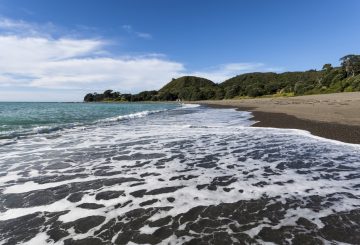Một nhà dịch tễ học hàng đầu cho biết cách ly và cách ly được quản lý (MIQ) đang phục vụ mục đích của nó.
Hệ thống này đã có những lời chỉ trích ngày càng tăng gần đây khi mọi người đấu tranh để trở về New Zealand thông qua xổ số MIQ hoặc trên cơ sở khẩn cấp.
Giáo sư Michael Baker cho biết trong khi MIQ đã thực hiện công việc của mình, nó đã đi kèm với một số sự đánh đổi khó khăn.
Nhà báo New Zealand Charlotte Bellis tuần này tiết lộ cô là một trong những người đã không thể bảo đảm một không gian MIQ khẩn cấp.
Bellis, người trước đây làm việc cho Al Jazeera ở Qatar, đang mang thai và không thể ở lại Doha, bởi vì phụ nữ chưa lập gia đình ở đó mang thai là bất hợp pháp.
Sau khi không đạt được điểm MIQ, cô đã được cấp phép bởi các quan chức cấp cao Taliban ở Afghanistan, nơi trước đây cô đã báo cáo từ đó, thay vào đó đến đó.
Baker cho biết trong khi anh ta không có bất kỳ sự tham gia hoặc chuyên môn nào trong hệ thống MIQ khẩn cấp, trường hợp của Bellis dường như biện minh cho cô là một ưu tiên cao.
“Tôi nghĩ đây là khía cạnh thực sự khó khăn trong việc quản lý biên giới của chúng tôi chặt chẽ và hạn chế số người đến New Zealand đến vài nghìn một tuần.”
Bellis cho biết các quốc gia khác hiện đang cung cấp hỗ trợ của họ nhưng cô cảm thấy thất vọng bởi hệ thống.
“Tôi nghĩ rằng họ [MIQ] có một tập hợp các loại được xác định hẹp đến mức thực sự không có con đường nào nếu bạn đang mang thai vì bạn phải có một điều trị theo lịch trình quan trọng về thời gian”, cô nói với RNZ.
Baker cho biết các hạn chế biên giới đã gây căng thẳng cá nhân rất lớn cho nhiều người New Zealand nhưng họ cũng là một phần quan trọng trong chiến lược Covid-19 của đất nước và đã giúp giữ tỷ lệ tử vong ở mức thấp.



















































-360x245.jpg)










